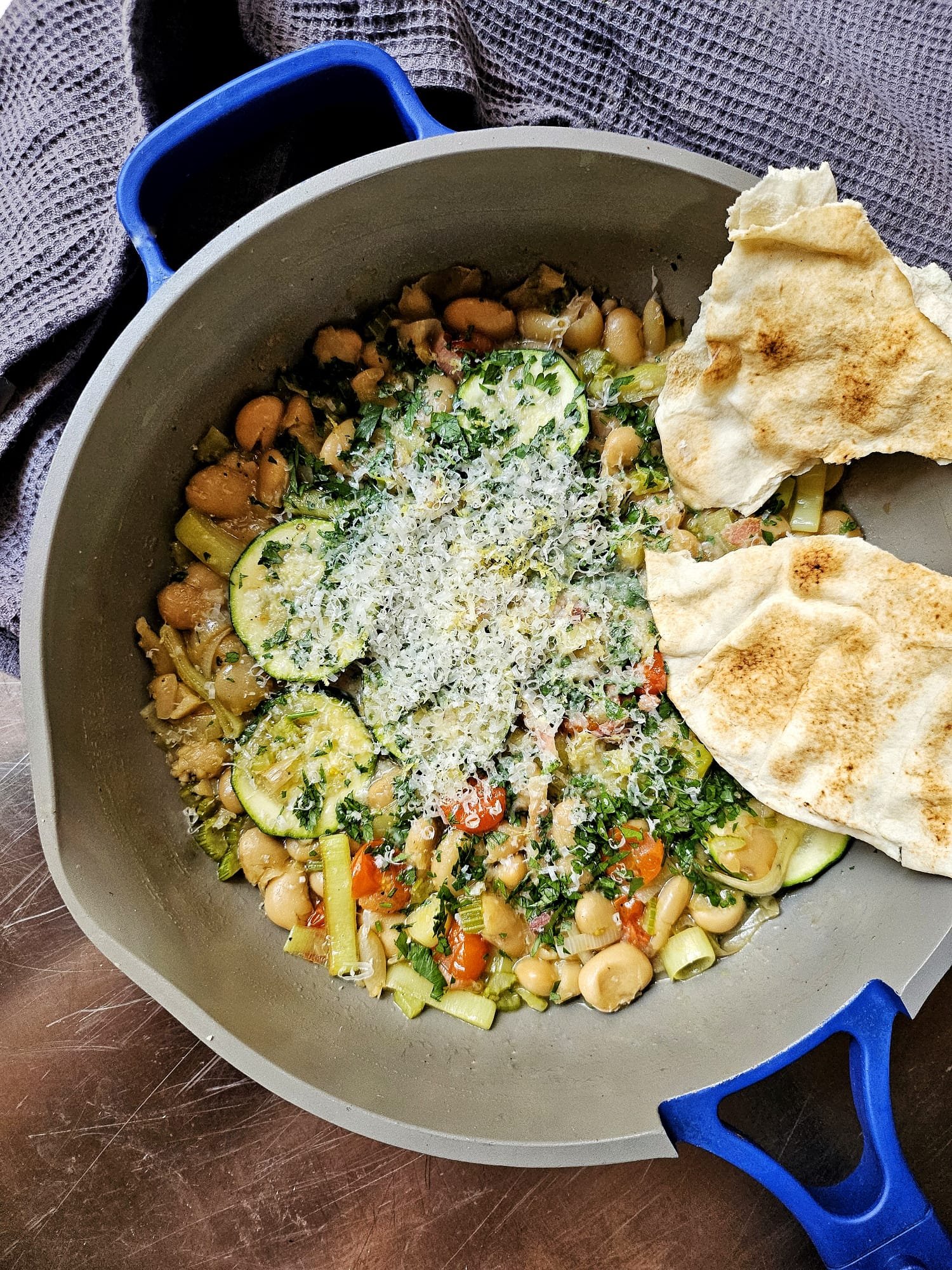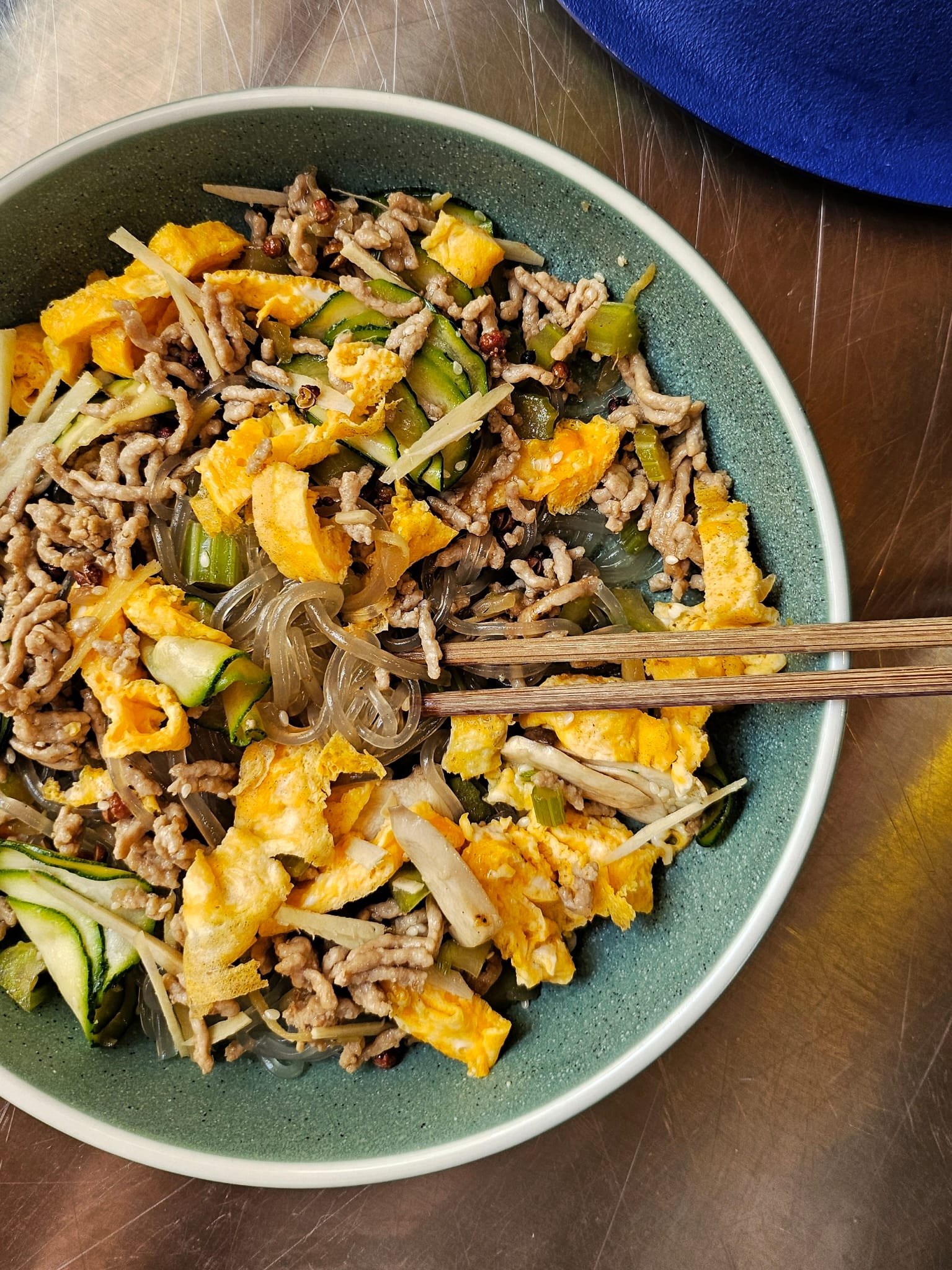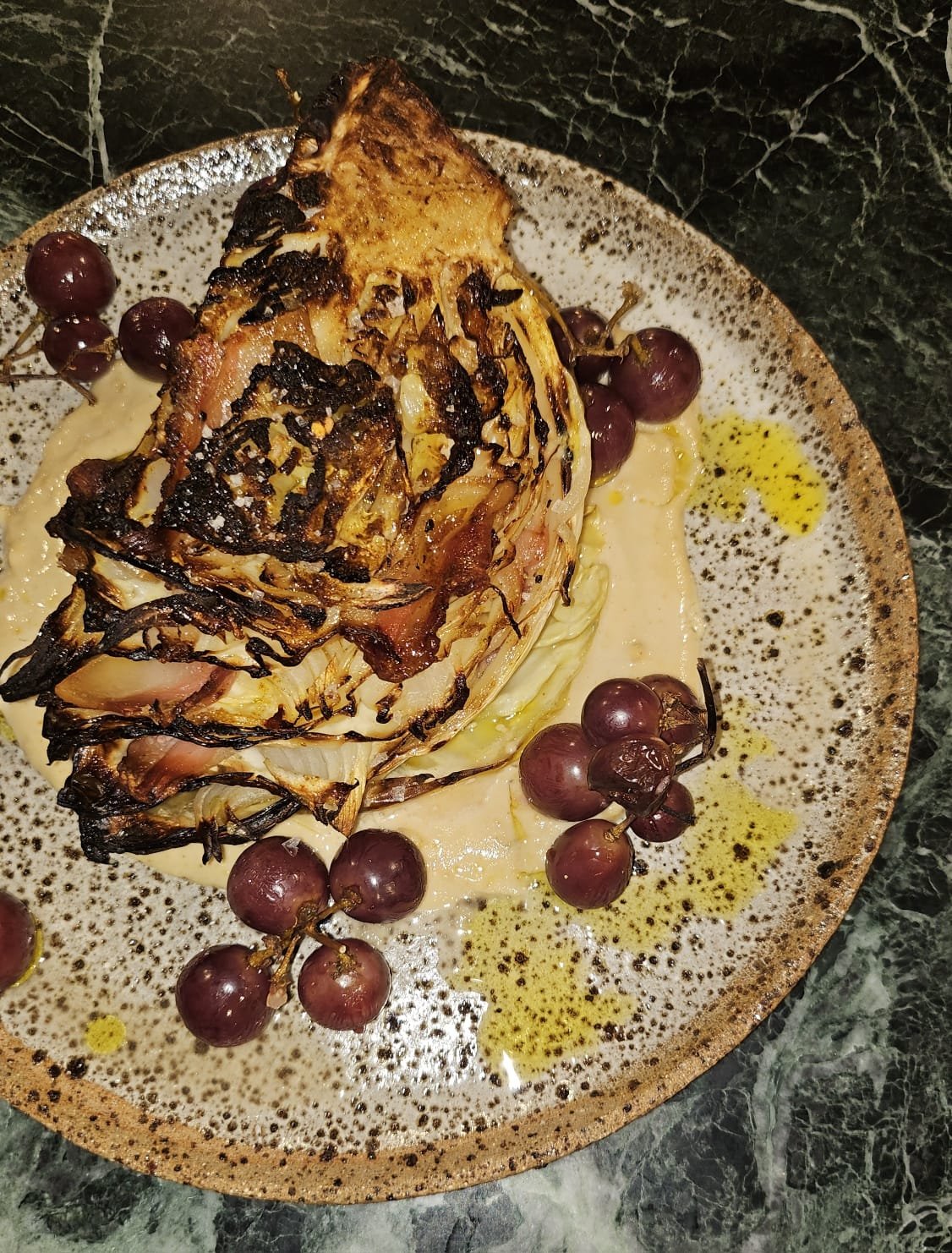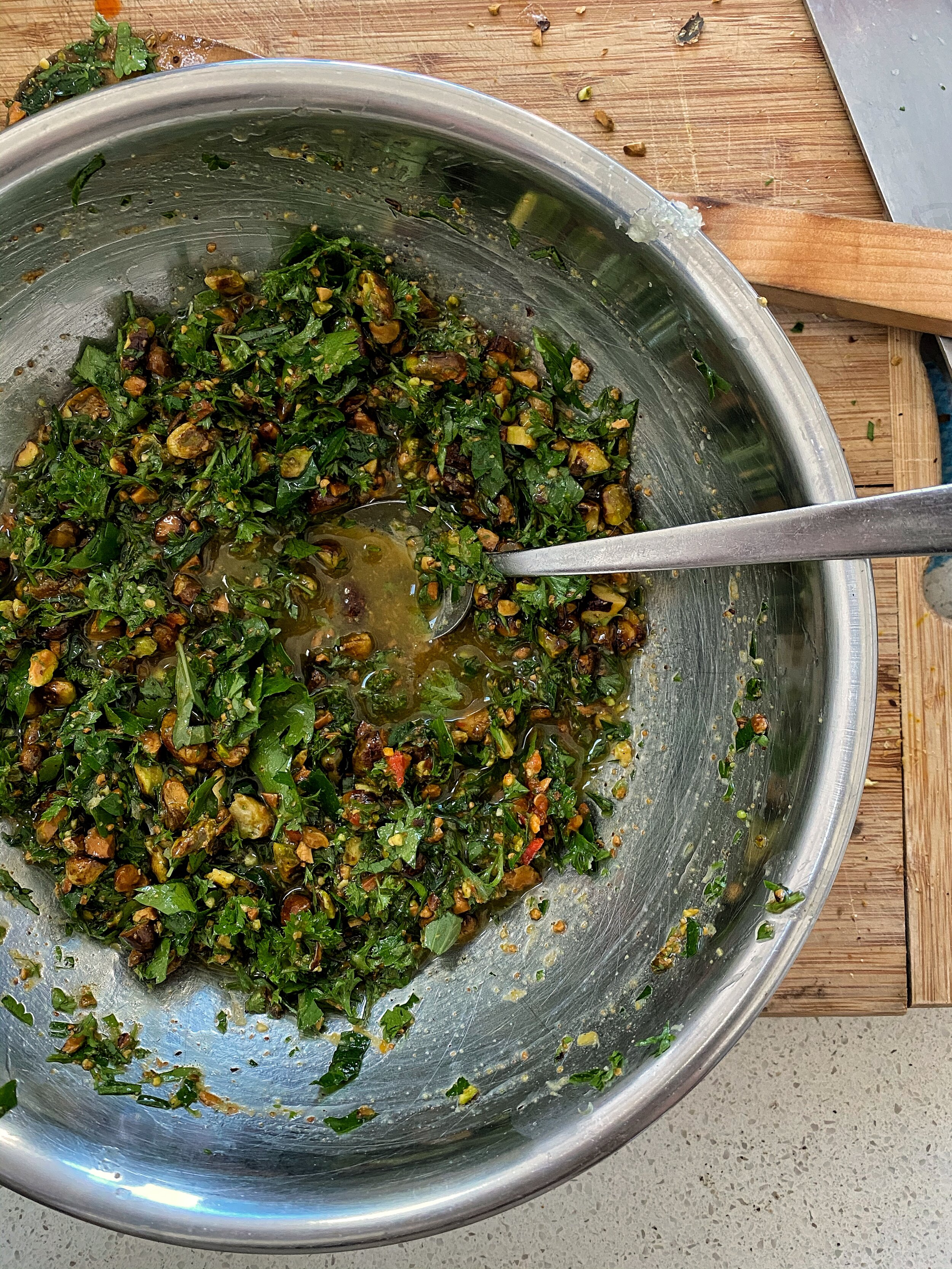As seen on Channel 10's The Cook's Pantry with chef Matt Sinclair
Nobody in the history or cooking rice, ever makes exactly the amount they need. There are always leftovers, which are perfect for making fried rice. I love this dish because it makes short work of throwing together a hot and delicious meal and is a resourceful way of using up leftovers and elevating vegetables that are perhaps past their prime, to new heights. This is a great meal for anytime of the day, from a quick and nutritious snack, to a full-on feast. Add it to your mid week arsenal!
Serves 2 as a main meal or 4 as part of a feast
Ingredients
2 rashers middle bacon, rind removed, coarsely chopped
1 thumb sized piece ginger, finely chopped
2 cloves garlic, finely chopped
2 stalks shallot (scallion), trimmed and finely chopped
2-3 cups day old boiled/rice cooker rice
1 cup leftover veggies, chopped into 1cm pieces (leftover roasted veg like carrots and Brussels sprouts are great, as are frozen peas or tinned corn)
1 tablespoon kecap manis
1 tablespoon Lau Gan Ma chilli flakes in oil
2 free range eggs, lightly whisked with a fork
Salt and white pepper
A handful fresh beansprouts, to garnish
Method
In a hot wok, add the bacon and stir fry until golden. Add in the ginger, garlic and shallot and stir fry until translucent, but not browned. Throw in the rice and use the spatula to break it up to remove any clumps, then stir fry for 2-3 minutes to allow the rice to take on the flavours and reheat.
Throw in the vegetables, then the kecap manis and chilli flakes in oil (to taste). Bring the wok back up to a high heat, then, in a gradual ribbon, pour in the egg, tossing/stir frying the ingredients constantly, to evenly distribute the egg throughout the rice. The egg will cook very quickly and will continue to cook off the heat from the residual heat in the wok, so it’s important not to overcook. Season with salt and pepper to taste and remove from heat. Serve with fresh beansprouts and more chilli oil on top.
To make this dish more substantial, or to use up any leftovers, you could also add in leftover cooked meat such as roasted chicken or pork, or tofu.



























